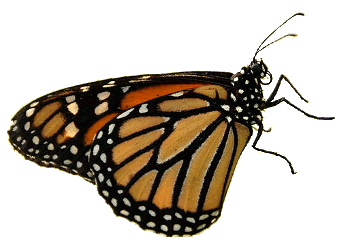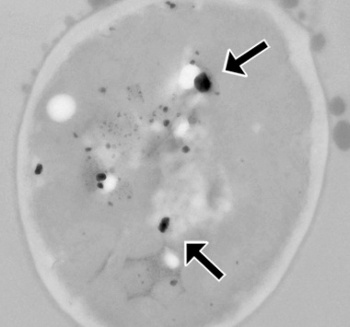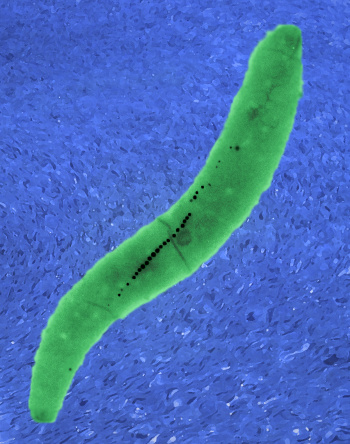Magnetic Yeast
March 7, 2012
When people think about
animal magnetism, it's more likely in the context of one of the many male and female
pop stars. Even
Britney Spears, at her advanced age (for pop stars) of thirty, can still give a seductive performance, as evidenced in her recent
music videos.[1]
Although animal magnetism is properly described as just the
sociological quality known as
charisma, it was once believed that a form of magnetism was really involved.
Franz Mesmer, from who we get the term,
mesmerize, thought that a type of magnetism, which was not the physicist's concept of
magnetism, permeated the bodies of all
animals, and one animal could influence another through such magnetism.
Such an idea sounds strange to today's
scientists, but it explained a lot of things in the
eighteenth century in which it was introduced. Even today, magnetic cures abound for many
ailments, as I mentioned in a
previous article (Electricity, Magnetism and Morality, September 28, 2011). There was a period when
electricity was promoted as a medical cure, also.
There is, however, a modern science of magnetism of animals that's quite distinct from these. Some animals are known to possess
receptors for
magnetic field, a property known as
magnetoception. Such a magnetic sense would have an obvious
evolutionary advantage to animals that
migrate over long distances.
Homing pigeons, which do not migrate, but are known to be good
direction finders, have been found to have this magnetic sense.
The magnetically active material in magnetoception is
magnetite,[2] which is located in the
ethmoid bones.[3] These bones are located just behind the
nose, between the
eyes. Magnetite has been found in these bones for
humans, also, but its occurrence must be
vestigial.[3] It's hard to posit any evolutionary advantage for this in a species that generally remains within a few hundred miles of its birthplace for its entire life.

Monarch butterfly
(Danaus plexippus)
Monarchs have been found to use magnetoception for navigation.[4]
(Via Wikimedia Commons.)
It's not just the higher organisms that respond to magnetic fields.
Magnetotactic bacteria are also known to exist.[5-6] These were discovered by Richard P. Blakemore in 1975, and they were found to respond to magnetic fields as small as 0.5 gauss.[5] The
Earth's magnetic field ranges from about 0.25 - 0.65 gauss, depending on location.
In magnetoception, the organism participates in its response to a magnetic field. In
magnetotaxis, however, the response is physical, not physiological. Magnetic fields exert an actual
force on the bacteria. In a recent feat of
bioengineering, scientists from
Harvard University have succeeded in inducing
magnetotaxis in
bacteria that are not naturally magnetotactic.[7-10]
To make an organism magnetotactic, you need to introduce
magnetic material into its structure. The naturally occurring magnetotactic bacteria have genes that are responsible for production of such material. To make budding yeast bacteria (
Saccharomyces cerevisiae) magnetotactic, the Harvard research team deleted a
gene that moves excess
iron into
vacuoles, which are storage containers in the cell. Deletion of this gene allowed iron to accumulate in the cells when they were immersed in an growth medium enriched in iron with
ferric citrate.

The arrows in this photomicrograph identify two large concentrations of iron in a yeast cell.
There's enough magnetic material present to cause such cells to move in a magnetic field.
(Harvard University image by Pamela Silver and Keiji Nishida, used with permission)
Preventing the cells from sequestering iron did make the bacteria sensitive to magnetic field, but the Harvard team found a way to enhance the magnetotaxis. They modified the bacteria to produce human
ferritin proteins, which further prevents storage of iron in the cell. Addition of another protein that regulates
cell metabolism also enhanced the magnetotaxis.[8]
Magnetotaxis in bacteria can be useful in industrial processes as a way to separate cells. Also, magnetism could be used to guide cells to form layers for
tissue engineering. This work was funded by the
Japan Society for Promotion of Science Postdoctoral Fellowship for Research Abroad, the
ONR Multidisciplinary Research Initiative, and the
Wyss Institute of Biologically Inspired Engineering.[8]

TEM image of Magnetospirillum gryphiswaldense(MSR-1), a freshwater Gram-negative microaerophilic bacterium.
The bacteria synthesize magnetite (Fe3O4) nanoparticles that are arranged in a chain inside the cell allowing the organism to orient itself in Earth's geomagnetic field.
(Photograph by Zachery Oestreicher and Brian H. Lower. Used with permission.)
![]()
References:
- Britney Spears - Dance Till The World Ends. As a science fiction fan, I prefer the meteor apocalypse version.
- J L Kirschvink, M M Walker and C E Diebel, "Magnetite-based magnetoreception," Current Opinion Neurobiology, vol. 11, no. 4 (2001), pp. 462-467.
- Stephen Juan, "Homing humans - Do humans have a compass in their nose?" Register (UK), November 17, 2006.
- Jason A. Etheredge, Sandra M. Perez, Orley R. Taylor and Rudolf Jander, "Monarch butterflies (Danaus plexippus L.) use a magnetic compass for navigation," Proc. Natl. Acad. Sci., vol. 96 ͉ no. 24 (November 23, 1999), pp.13845-13846.
- Richard Blakemore, "Magnetotactic Bacteria". Science, vol. 190, no. 4212 (October 24, 1975), pp. 377-379.
- Richard P. Blakemore, Magnetotactic Bacteria, Ann. Rev. Microbiol, vol. 36 (1982), pp. 217-238.
- Keiji Nishida and Pamela A. Silver, "Induction of Biogenic Magnetization and Redox Control by a Component of the Target of Rapamycin Complex 1 Signaling Pathway," PLOS Biology, February, 2012, Document No. 1001269.
- Twig Mowatt, "New 'Magnetic Yeast' Could be Significant Step in Harnessing Nature's Magnetic Capabilities," Harvard University Press Release, Feb 28, 2012.
- Bryan Ghosh, "The laws of attraction: Making magnetic yeast," Public Library of Science Press Release, February 28, 2012.
- Stephanie Huang, "Making Magnetic Yeast," PLOS Biology, vol. 10, no. 2 (February 28, 2012), Document No. 1001274
Permanent Link to this article
Linked Keywords: Animal magnetism; pop star; Britney Spears; music video; sociological; quality; charisma; Franz Mesmer; mesmerize; magnetism; animal; scientist; eighteenth century; ailment; electricity; receptor; magnetic field; magnetoception; evolution; evolutionary advantage; animal migration; homing pigeons; animal navigation; direction findinf; magnetite; ethmoid bone; nose; eye; human; vestigial; Monarch butterfly; Wikimedia Commons; magnetotactic bacteria; Earth's magnetic field; magnetotactic; force; bioengineering; Harvard University; magnetotaxis; bacteria; magnetic material; Saccharomyces cerevisiae; gene; iron; vacuole; ferric citrate; Pamela Silver; Keiji Nishida; ferritin; cell metabolism; tissue engineering; Japan Society for Promotion of Science Postdoctoral Fellowship for Research Abroad; ONR Multidisciplinary Research Initiative; Wyss Institute of Biologically Inspired Engineering.